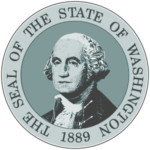Pillar overview
Building a healthy learning community is vital to the success of any classroom. The emotional and social safety of class members becomes paramount when issues of culture, identity, educational equity, and learning to teach are at the heart of a course. Students need to feel a sense of belonging, a feeling that they are known, and that they know and can trust their classmates. They need time and support to build these relationships. They need clear expectations for interactions, behavior, procedures, and academic work, and they need to know what happens when they do not meet these expectations.
This pillar draws on the experiences of students as members of diverse learning communities and is informed by readings, structured observations, and discussions. Although we recommend that this pillar occur in the earliest days of the school year to provide the foundation on which the high school learning community is built, elements of may be revisited throughout the course as needed for the health of the community or as students experience other settings or new roles in their practicum placements.
Competencies
Students will…
- Understand that establishing a healthy learning community is essential to supporting academic learning and social/emotional development, and that management choices reflect beliefs.
- Draw on research, theory, observations and practice to develop and identify elements of and strategies to promote a culturally responsive and productive learning community.
- Apply their personal definitions of a healthy learning community to collaborate with others to establish, monitor and refine a healthy learning community in the high school and in practicum placements.
- Lay the foundation for reflective practice; observing, connecting, interpreting and applying lessons from experience to guide their own learning.
Essential questions
- How can we create a community of learners that supports us individually and collectively for success this year?
- How do we support an environment in which all students feel welcome and valued?
- What are my beliefs about the essential elements of a healthy learning community and how will this inform my future teaching?
Desired results
Students will understand that…
- A positive classroom environment is essential to successful learning;
- Different philosophies and techniques of management exist and teacher choices have an effect of student participation and learning;
- A healthy learning community requires planning, teaching, developing, monitoring and refining overtime;
- Common elements of classroom management often cited across sources include: relationships, expectations, rituals, routines, rules/ consequences;
- Without conscious attention to creating a positive classroom environment for all learners, some students will be left out or left behind academically.
Students will be able to…
- Identify elements of and participate in co-creating a plan for a healthy learning community that respects diverse members and supports all to take risks for understanding.
- Monitor and direct their participation in this learning community and others overtime.
- Lay the foundation for a reflective practice; observing, connecting, interpreting and applying lessons from experience to guide their own learning.
- Identify common elements of student centered classroom management and effective strategies that teachers use to develop their management systems.
Students will know…
- Various approaches to classroom management, including teacher vs. student centered management, internally versus externally regulated, democratic, culturally responsive, caring.
- Develop a repertoire of strategies to build relationships, promote cooperation, communication, and problem solve and know why these are important in the classroom and the professional world.
- Understand common behavior problems, possible causes, and potential solutions.
Students will be skilled at…
- Applying concepts of classroom management to their own class as a student and mentor with implications for the future;
- Practicing respectful communication and collaboration to learn from one another;
- Reflect on elements of classroom management that work for them and compare how these are similar to and different for peers;
- Making a plan for classroom management linked to philosophy, practices and development over time.

